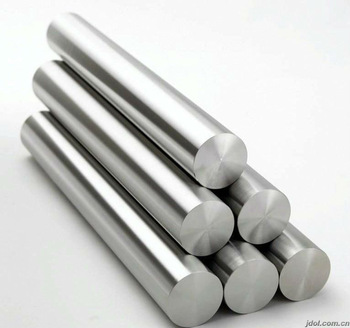- EN 441 stainless steel flat bar Hot rolled / cold drawn
- STS304L stainless steel round bar
- Stainless Steel Hot Rolled Flat Bar
- ISO Stainless Steel Angle Bar
- straight cut stainless steel wire sus304
- 304 bright soft annealed stainless steel wire
- 304L bright soft annealed stainless steel wire
- Stainless Steel Wire
- AISI316 stainless steel round pipe/tube
- 300 Series grade stainless steel round pipe
- AISI/SUS stainless steel pipe/tube cold drawn
- ASTM A249 stainless steel round pipe

The difference between type 304 & type 316 stainless steel
Inquiries : 0 - 2014/7/21 10:51:19

����TYPE 304 STAINLESS STEEL
����Type 304, with it��s chromium-nickel content and low carbon, is the most versatile and widely used of the austenitic stainless steels. Type 304 alloys are all modications of the 18% chromium, 8% nickel austenitic alloy. Applications for this group of alloys are varied and all possess somewhat similar characteristics in resistance to oxidation, corrosion, and durability. All provide ease of fabrication and cleaning, prevention of product contamination and over a variety of finishes and appearances.
����GENERAL PROPERTIES �C TYPE 304
����Type 304 stainless steels can meet a wide variety of physical requirements, making them excellent materials for applications including auto molding and trim, wheel covers, kitchen equipment, hose clamps, springs, truck bodies, exhaust manifolds, stainless atware, storage tanks, pressure vessels and piping.
����TYPICAL ANALYSIS �C TYPE 304
����Represented by ASTM-A240 AND ASME SA240.
����Elements by Percentage by Weight - Maximum Unless Range is Specified.
����C = .08 / Mn = 2.00 / P = .045 / S = .030 / Si = 1.00 / Cr = 18.00 - 20.00 / Ni = 8.00-12.00 / N = .10
����RESISTANCE TO CORROSION �C TYPE 304
����The 18% chromium, 8% nickel, provides good resistance to moderately acidic or caustic solutions. Type 304 may be considered to perform similarly in most non-severe applications. A notable exception is in the case of welding. Low carbon (304L) is the recommended alloy and provides increased resistance to intergranular corrosion.
����MECHANICAL PROPERTIES OF TYPE 304 AT ROOM TEMPERATURE
����Typical Mechanical Properties required for annealed material covered by ASTM A240.
����Yield Strength .2% offset = 30,000 / Ultimate Tensile Strength = 80,000 / Elongation = 50%. Hardness R = 90 max.
����TYPE 316 STAINLESS STEEL
����Type 316 is an austenitic chromium-nickel stainless and heat-resisting steel with superior corrosion resistance as compared to other chromium-nickel steels when exposed to many types of chemical corrodents such as sea water, brine solutions, and the like.
����GENERAL PROPERTIES �C TYPE 316
����Type 316 alloy is a molybdenum bearing stainless steel. It has a greater resistance to chemical attack than the 304 family. Similarly, Type 316 is durable, easy-to-fabricate, clean, weld and finish.
����TYPICAL ANALYSIS �C TYPE 316
����Represented by ASTM-A240 and ASME SA240.
����C = .08 / Mn = 2.00 / P = .04 / S = .03 / Si = 1.00 / Cr = 16.00 - 18.00 / Ni = 10.00 - 14.00 / Mo = 2.00 - 3.00
����RESISTANCE TO CORROSION �C TYPE 316
����The addtion of 2% molybdenum makes 316 considerably more resistant to corrosion and oxidation than the 304 family of alloys.
����MECHANICAL PROPERTIES OF TYPE 316 AT ROOM TEMPERATURE
����Typical Mechanical Properties required for annealed material covered by ASTM-A240. Yield Strength .2% offset = 30,000 / Ultimate Tensile Strength = 80,000 / Elongation = 50%. Hardness R = 90 max.
����Type 316 is considerably more resistant to solutions of sulfuric acid, chlorides, bromides, iodides and fatty acids at high temperature. In the manufacture of certain pharmaceuticals, stainless steels containing molybdenum are required in order to avoid excessive metallic contamination.

